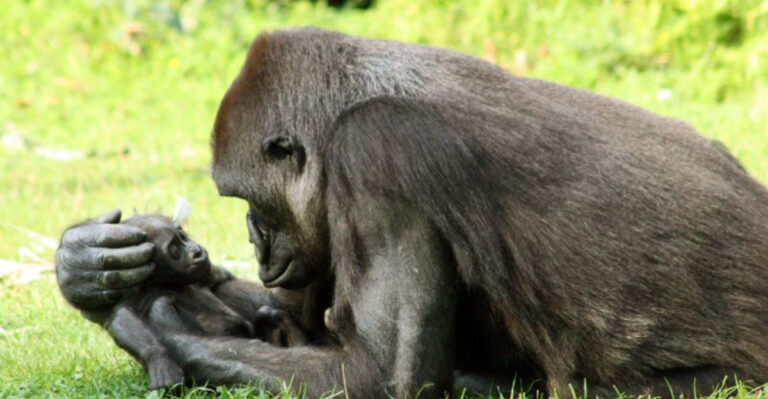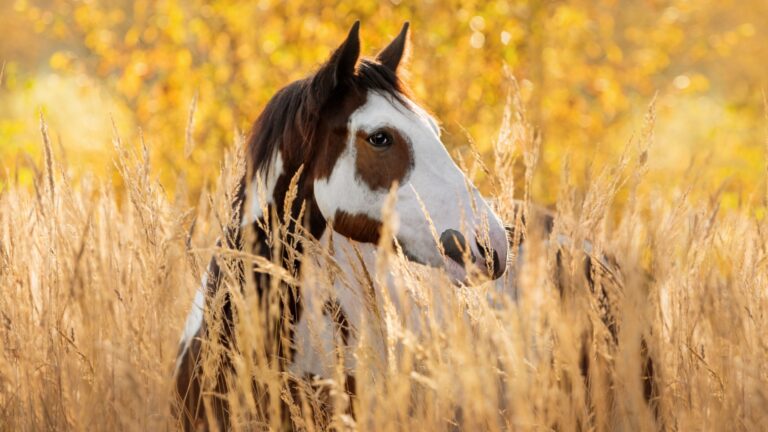13 Reasons Why The American Staffordshire Terrier Is So Misunderstood

The American Staffordshire Terrier, often simply known as the AmStaff, is a breed that turns heads and raises eyebrows. But why is this lovable pooch so misunderstood?
With their muscular build and confident stance, these dogs carry a reputation that isn’t always deserved. It’s time to unravel the mystery surrounding this breed and shed some light on why they might not be the menace they’re often made out to be.
From their history to their heartwarming personalities, let’s explore reasons why the American Staffordshire Terrier is more than meets the eye.
1. Their Tough Appearance

Appearances can be deceiving, a truth that rings especially valid for the American Staffordshire Terrier. With their robust physique and powerful stance, they often project an image of intimidation. This physicality, while impressive, can mistakenly give the impression of aggression to those unfamiliar with the breed.
However, beneath this strong exterior lies a gentle giant eager for affection. These dogs have a rich history as loyal companions, a fact overshadowed by their tough looks. While their muscles are prominent, their hearts are even bigger.
Often, they are misunderstood for being inherently dangerous, yet they crave human interaction and companionship. The challenge lies in changing public perception. Education about the breed is crucial in dispelling myths.
Owners often find that their AmStaff is more likely to shower them with slobbery kisses than exhibit aggressive behavior. It’s a call to look beyond the surface, to discover a friend in what many mistake for a foe.
2. Media Stereotypes
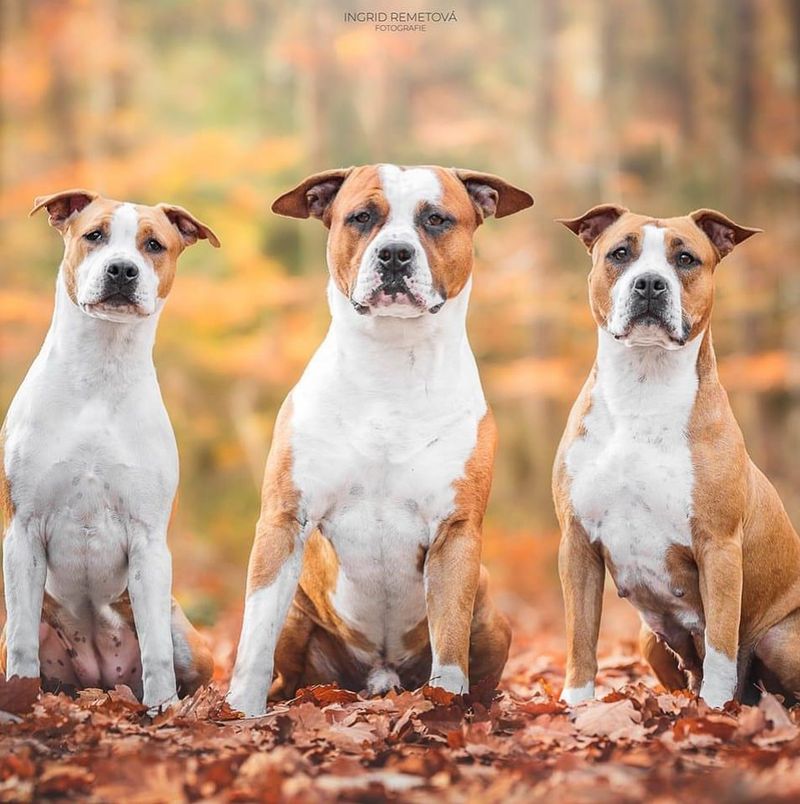
In the world of media, sensationalism sells, and unfortunately, the American Staffordshire Terrier often falls victim to these exaggerated stories. News outlets sometimes portray them as vicious creatures, focusing on isolated incidents rather than everyday realities. This skewed representation contributes to their misunderstood reputation, painting them as beasts rather than buddies.
Such stereotypes can be harmful, leading to unwarranted fear and bias against the breed. Many stories fail to consider the context or the human factors involved in incidents, perpetuating a cycle of misunderstanding. These narratives often overshadow the heartwarming tales of AmStaffs as therapy dogs or loving family pets. Challenging these media-driven stereotypes requires a shift in storytelling.
By highlighting positive stories and responsible ownership, we can help reshape the narrative. AmStaffs, like any other breed, have diverse personalities, and many thrive in nurturing environments. It’s time to give this breed a fair chance, moving past the headlines to the heartlines.
3. Historical Misconceptions

Unraveling the past can often clarify the present, and the history of the American Staffordshire Terrier is a tapestry of misconceptions. Originating in the 19th century, these dogs were bred for strength and agility, qualities that were exploited for less noble purposes. However, it’s crucial to distinguish between past misuse and the breed’s true nature.
Historically, their strength was seen as a tool, yet their loyalty was often overlooked. Despite being associated with certain unsavory activities, many AmStaffs were simultaneously beloved family pets, demonstrating their dual capacity for companionship and protection. Today’s challenge is to educate the public about these historical misconceptions.
By understanding their roots, we can appreciate the breed’s evolution into the affectionate companions they are today. The American Staffordshire Terrier’s history should not define its future, and with open minds, we can rewrite their narrative.
4. Misinformation On Aggression
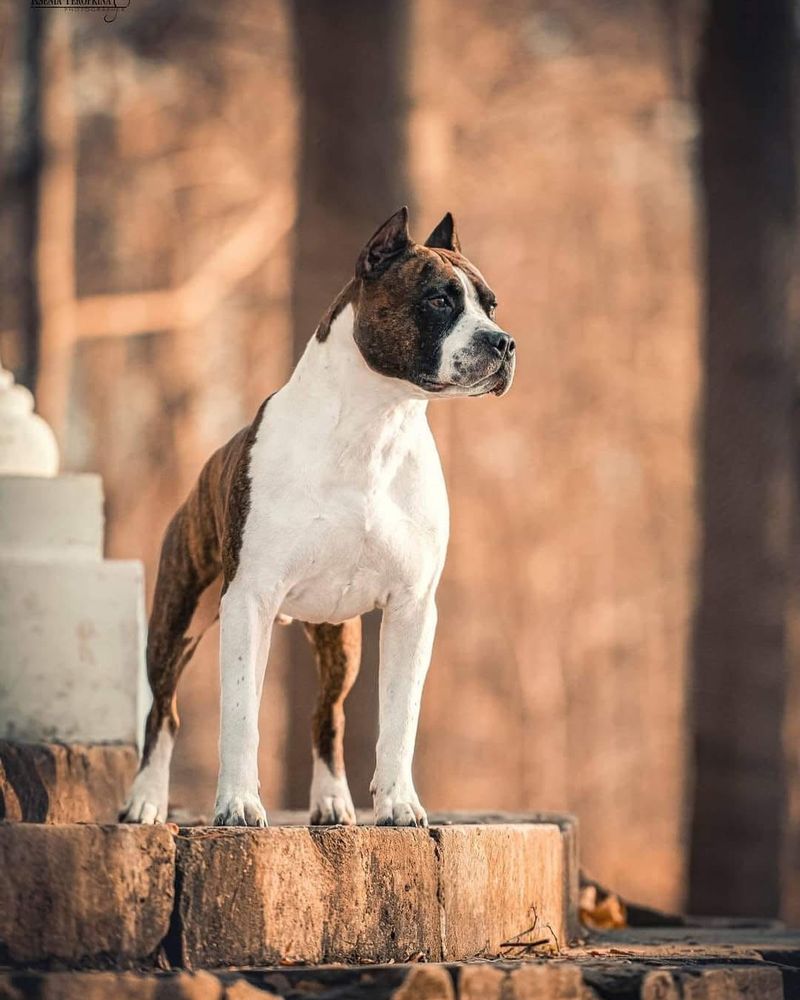
Aggression is a word often unfairly linked to the American Staffordshire Terrier. Yet, when trained and socialized properly, these dogs are as gentle as they are muscular. Their playful antics and affectionate nature make them wonderful companions, especially in family settings.
Unfortunately, misinformation about their temperament continues to cloud public perception. Understanding the difference between inherent aggression and learned behavior is key. Many AmStaffs are incredibly patient and kind, thriving in environments where they receive the love and guidance they need.
Responsible ownership plays a significant role in nurturing their true personalities. Combatting this misinformation involves sharing experiences and educating potential owners. By focusing on positive interactions and success stories, we can change the narrative.
These dogs are more than capable of being gentle giants, and with the right environment, they flourish as loving members of the family.
5. Breed Confusion

It’s easy to mistake an American Staffordshire Terrier for other similar-looking breeds, leading to a tangled web of breed confusion. With their muscular builds and broad heads, they often get grouped with breeds like the Pit Bull or Bull Terrier, causing a mix-up that doesn’t do justice to their unique identity. This confusion sometimes results in unwarranted stereotypes or assumptions about their behavior.
Each breed has its own distinct traits, and recognizing these differences is crucial for understanding the AmStaff’s true nature. Their intelligence, trainability, and affection make them stand out as exceptional companions. To remedy this confusion, education is key.
By learning about breed specifics, we can appreciate the American Staffordshire Terrier for its own qualities, rather than lumping it with others. This clarity can help potential owners make informed decisions, fostering environments where these dogs can thrive.
6. Unfair Legislation

Breed-specific legislation often casts a shadow over the American Staffordshire Terrier, painting them with a broad brush that ignores individual temperament. These laws can be prejudicial, targeting specific breeds rather than addressing the root causes of aggressive behavior, such as irresponsible ownership or lack of training.
This legislation can lead to unwarranted fear and discrimination, affecting both the dogs and their owners. Many AmStaffs are loving, gentle pets that face stigmatization due to these laws. It’s a classic case of judging a book by its cover, rather than understanding the story within. Advocating for fair treatment involves challenging these laws with facts and statistics, promoting responsible ownership instead of blanket bans.
By focusing on education and positive examples, we can work toward legislation that recognizes each dog’s individual nature. The aim is to see dogs for who they are, not what they’re presumed to be based on appearance.
7. Training Challenges
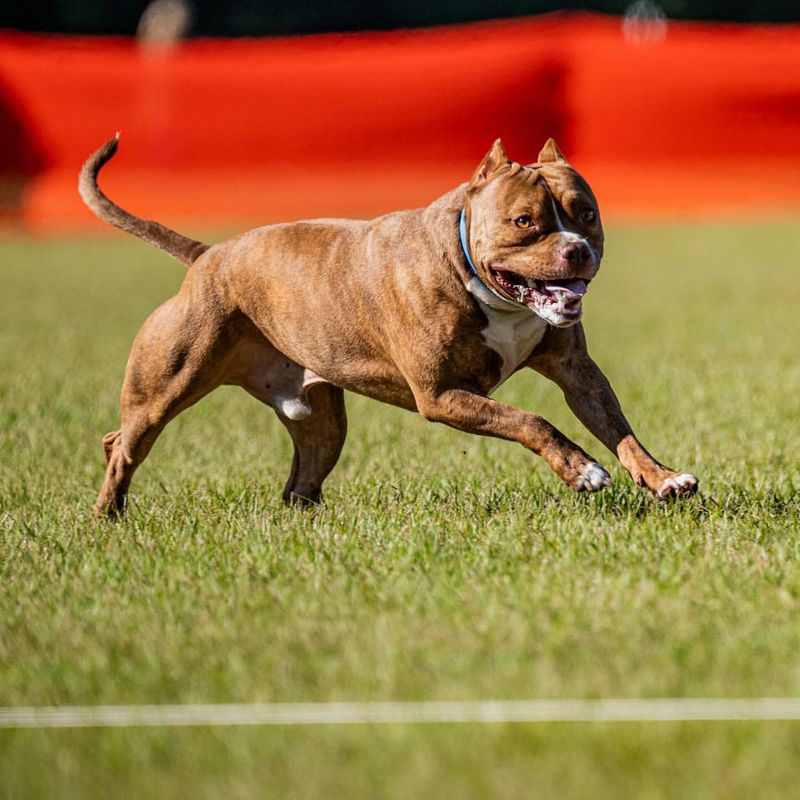
Training an American Staffordshire Terrier can sometimes seem like mastering a complex puzzle, but with the right approach, it’s entirely manageable. These dogs are intelligent and eager to please, but they can also exhibit a stubborn streak that makes training a unique experience.
The key is positive reinforcement and consistency. AmStaffs respond well to clear communication and rewards-based training methods, thriving when they understand what’s expected of them. Patience is essential, as is understanding each dog’s individual learning pace. For those up for the challenge, the rewards are tremendous.
A well-trained AmStaff is a joy to be around, displaying manners and behaviors that showcase their best qualities. By focusing on encouragement rather than criticism, owners can foster a bond built on trust and respect. Training is not just about commands; it’s about building a lifelong partnership.
8. Misinterpretation Of Playfulness

When an American Staffordshire Terrier jumps into action, it’s often a whirlwind of energy and enthusiasm. However, this spirited playfulness can sometimes be misinterpreted as hyperactivity or even aggression by those unaccustomed to the breed’s zest for life.
Their playful nature is one of their most endearing traits, and it’s all about channeling that energy positively. Providing them with ample opportunities for exercise and mental stimulation is crucial. Interactive toys, long walks, and playful training sessions can help balance their energy levels.
Understanding their play style is key. These dogs thrive on engagement and often exhibit a puppy-like enthusiasm well into adulthood. By recognizing their joyous play for what it is, owners and onlookers alike can appreciate the fun-loving spirit of an AmStaff, turning misunderstandings into moments of joy.
9. Guarding Instincts Misread

The American Staffordshire Terrier’s guarding instincts are often misunderstood as outright aggression. In reality, these dogs possess a natural protective streak that, when nurtured correctly, serves as a testament to their loyalty and dedication to their family.
These instincts do not equate to unwarranted aggression; rather, they form a bond of security and trust. AmStaffs are observant and will alert their owners to anything amiss, but this behavior is rooted in care rather than hostility.
When socialized well, they differentiate between normal and threatening situations effectively. The task is to channel these instincts positively. Training can help manage their protective nature, ensuring it enhances rather than hinders their role as family companions.
With guidance, their guarding instincts become a reassuring presence, making them both loving and vigilant members of the household.
10. Appearance-Driven Bias
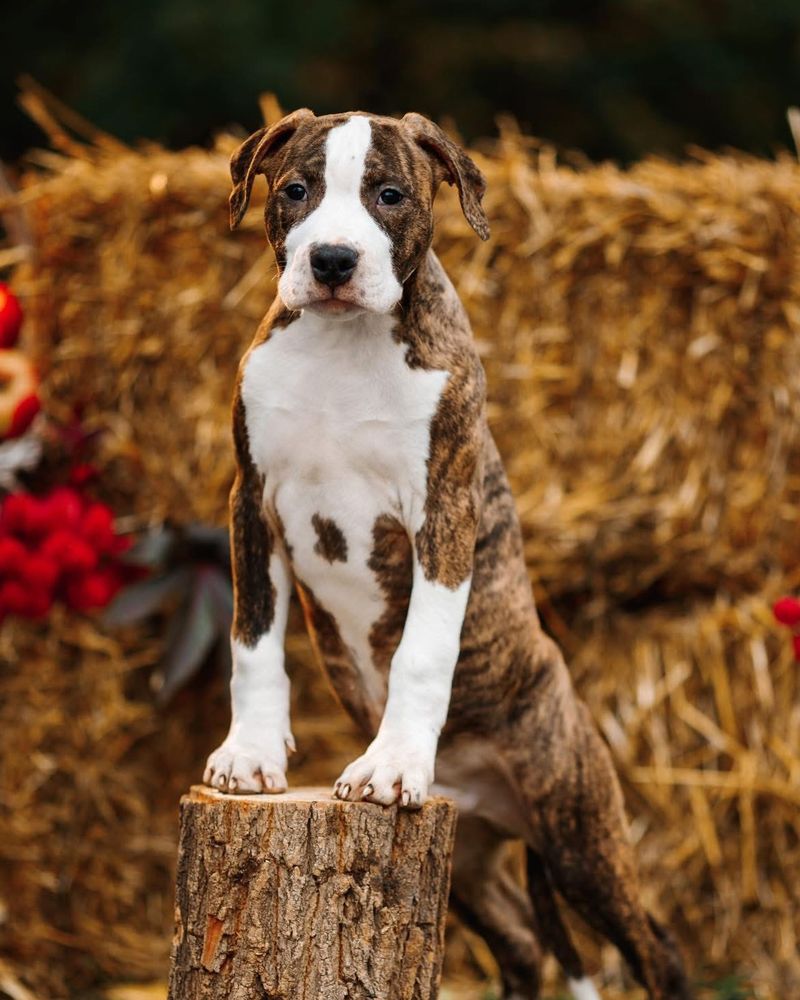
With their sturdy frames and alert expressions, American Staffordshire Terriers can unintentionally inspire fear based on looks alone. This appearance-driven bias often leads to misconceptions about their temperament, overshadowing their true nature.
While they may look like canine bodybuilders, these dogs often have a sweet, gentle side that defies expectations. They relish in cuddles and affection, often behaving more like lapdogs than one might assume given their robust appearance. Changing this bias involves showcasing their softer side.
Owners can help by sharing photos and stories that highlight their affectionate personalities. By moving past the physical and focusing on their hearts, we can appreciate these dogs for the loving companions they truly are.
11. Socialization Needs

Social butterflies or wallflowers? The answer often lies in early socialization for the American Staffordshire Terrier. These dogs thrive when exposed to various experiences, people, and other animals from a young age, shaping them into well-rounded companions. Socialization helps them navigate the world with confidence and ease. It reduces the likelihood of fear-based reactions and promotes positive interactions.
While they may exhibit a protective nature, socialization helps them determine friend from foe, making them adaptable and pleasant companions. For prospective owners, the key is to start early. Puppy classes, dog parks, and varied experiences contribute to a balanced temperament.
The reward is a dog that’s as comfortable in a bustling park as it is curled up at home. Proper socialization is a gift that keeps giving, transforming a misunderstood breed into a beloved member of the family.
12. Exercise Requirements

Keeping pace with an American Staffordshire Terrier is no small feat. These dogs possess a boundless energy that requires regular outlets to keep them happy and healthy. Without adequate exercise, they might channel that energy into less desirable behaviors, leading to misunderstandings about their nature.
Their exercise needs include both physical and mental stimulation. Long walks, playtime in the yard, and engaging games can help satisfy their active spirits. They excel in activities like agility or obedience training, where their intelligence and athleticism shine. Meeting these exercise requirements is a rewarding endeavor. It strengthens the bond between dog and owner, while ensuring the AmStaff remains content and well-adjusted.
Understanding their need for activity can dispel myths about hyperactivity or destructiveness, highlighting them instead as energetic, eager-to-please companions.
13. Emotional Sensitivity

Not all superheroes wear capes; some come with wagging tails and soulful eyes. The American Staffordshire Terrier is a breed that boasts surprising emotional sensitivity, often overlooked due to their formidable appearance. These dogs are adept at sensing their owner’s mood, offering companionship and comfort when it’s needed most.
Their empathetic nature makes them excellent therapy or emotional support animals. This sensitivity requires gentle handling, as harsh treatment can lead to anxiety or withdrawal. Recognizing their emotional depth can transform perceptions. AmStaffs are more than just brawn; they’re deeply connected to their human counterparts, often forming bonds that are both profound and enduring.
Their ability to intuitively understand human emotions adds a layer of richness to their companionship, revealing yet another reason why they should be cherished.

